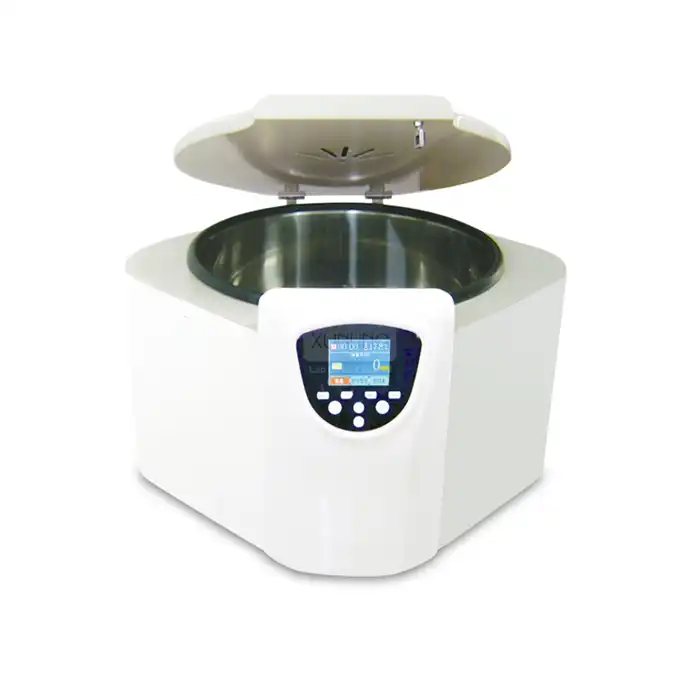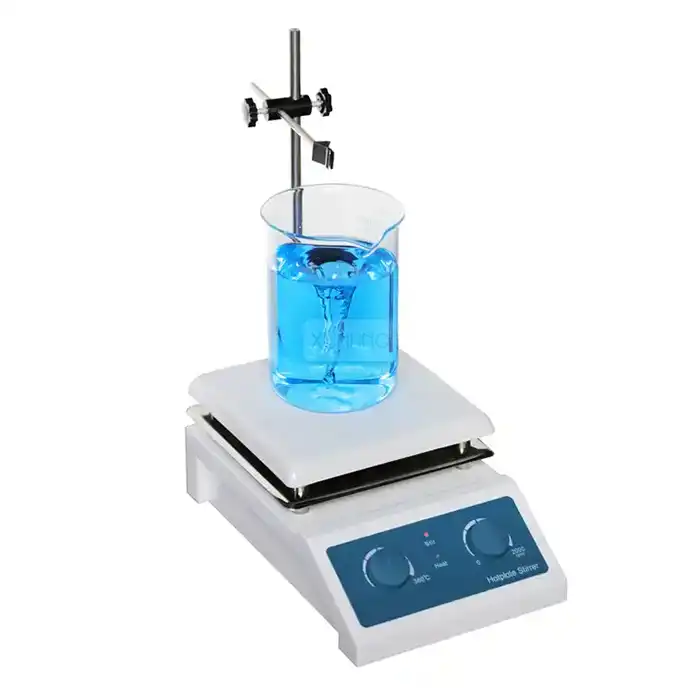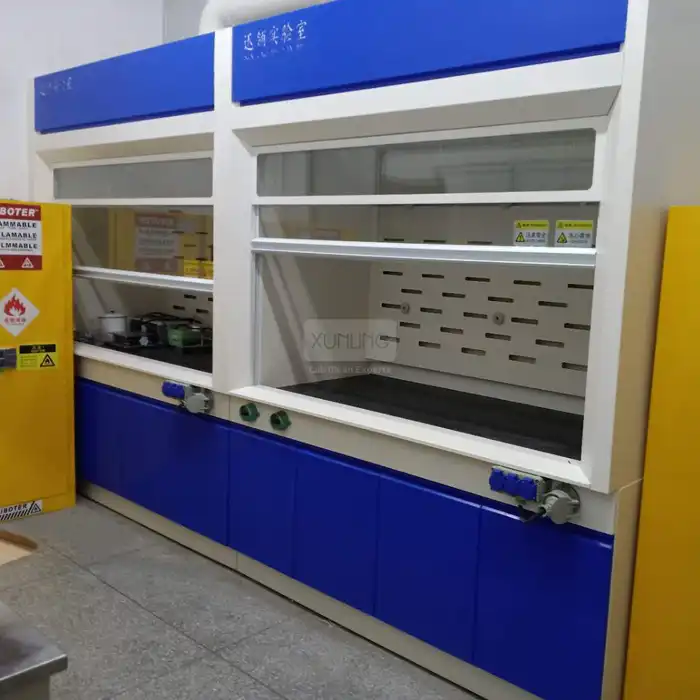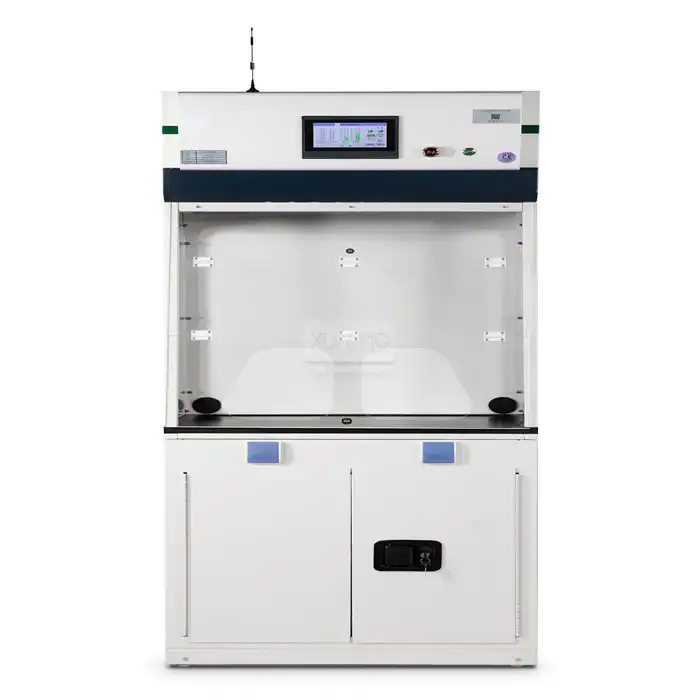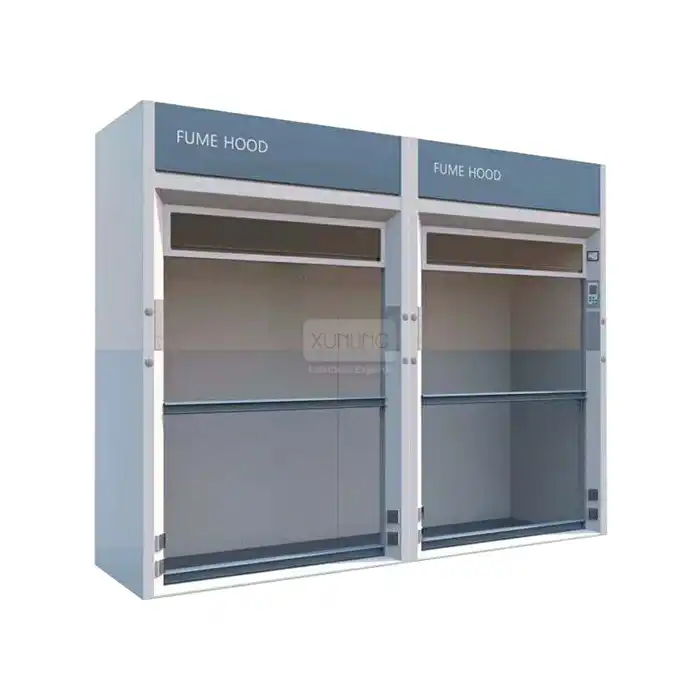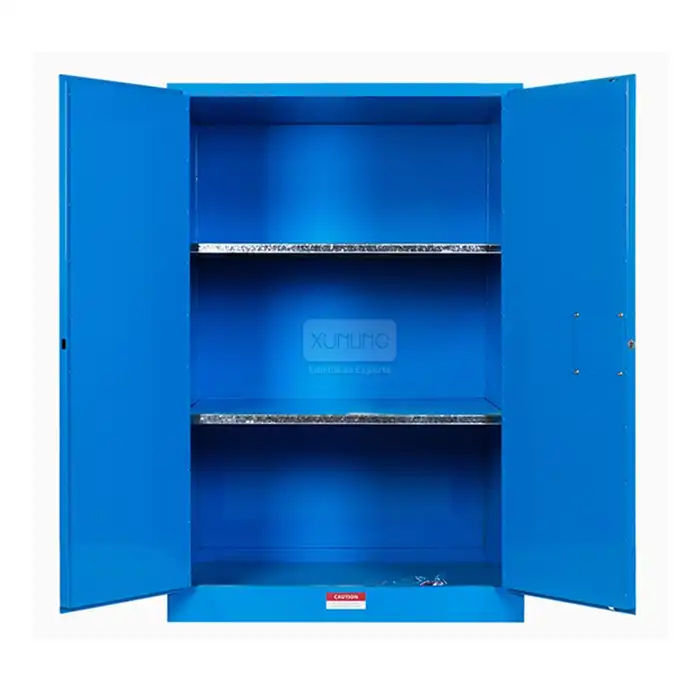
Self Contained Fume Hood vs. Ducted Systems: Which Wins?
2025-10-03 09:00:02
When selecting laboratory ventilation equipment, the debate between Self Contained Fume Hood systems and traditional ducted alternatives continues to challenge facility managers, engineers, and laboratory professionals worldwide. This comprehensive comparison explores the critical factors that determine which system emerges victorious in different laboratory environments, examining installation complexity, operational efficiency, safety considerations, and long-term cost implications to help you make an informed decision for your specific laboratory requirements. Ductless Fume Hoods are standalone units that filter contaminated air, recirculating clean air back into the room, while traditional ducted systems exhaust contaminated air outside through complex ductwork. The Self Contained Fume Hood represents a revolutionary approach to laboratory safety, integrating advanced filtration technology with user-friendly design. Compared with other types of chemical fume hoods, the ductless solutions can be more cost-efficient, easier to install and don't require ductwork around the building. However, determining the winner requires careful analysis of specific laboratory needs, chemical usage patterns, and operational requirements.
Performance Comparison: Safety and Efficiency Analysis
Superior Containment and Filtration Capabilities
The Self Contained Fume Hood demonstrates exceptional performance in containment and filtration through its advanced multi-stage filtration system. Unlike traditional ducted systems that rely solely on airflow velocity to remove contaminants, self-contained units employ sophisticated filtration technology including pre-filters, HEPA filters, and activated carbon filters. This comprehensive approach ensures that hazardous substances are effectively captured and neutralized before air recirculation. The integrated filtration system can handle acids fumes, alkali fumes, organic solvent vapors, ammonia, formaldehyde, powders, and micron particulates with remarkable efficiency. Modern Self Contained Fume Hood units maintain optimal airflow velocity between 0.3-0.7 m/s, which is adjustable based on specific application requirements. The real-time monitoring and alarming features provide continuous feedback on system performance, ensuring consistent protection for laboratory personnel. Ductless Fume Hood utilizes carbon or HEPA filtration to remove toxic vapors and protect laboratory personnel from chemical exposure, making them particularly effective for applications involving moderate chemical usage and specific types of laboratory procedures.
Energy Efficiency and Environmental Impact
Energy consumption represents a significant advantage for Self Contained Fume Hood systems compared to traditional ducted alternatives. Ducted systems continuously exhaust conditioned laboratory air, requiring constant replacement with fresh air that must be heated, cooled, and humidity-controlled. This process creates substantial energy demands and operational costs. In contrast, self-contained systems recirculate filtered air within the laboratory space, preserving the energy invested in environmental conditioning. Ductless fume hoods can offer unique advantages compared to traditional fume hoods, including being a more cost-efficient option that requires no ductwork. Additionally, temperature-controlled air is not removed from the workplace, which may contribute to energy savings. The reduced energy consumption translates to lower carbon footprint and operational costs, making self-contained systems an environmentally responsible choice. Furthermore, the elimination of complex exhaust systems reduces the overall mechanical load on building HVAC systems, contributing to improved building-wide energy efficiency. The quiet operation of Self Contained Fume Hood units, typically maintaining noise levels below 52 dBA, creates a more comfortable working environment while consuming less energy than traditional high-velocity exhaust systems.
Operational Flexibility and User Experience
Self Contained Fume Hood systems offer unparalleled operational flexibility that traditional ducted systems cannot match. The self-contained design eliminates dependence on building infrastructure, allowing laboratories to reconfigure workspace layouts without costly ductwork modifications. One key benefit to ductless fume hoods is that they provide far greater design flexibility than their ducted counterparts. You're not restricted to HVAC limitations (e.g., location, supply air capacity, make up air, etc.), it can fit into an existing open space rather than moving everything. This flexibility proves invaluable for growing laboratories, educational institutions, and research facilities that frequently adapt to changing research requirements. The intuitive LCD display control system provides real-time monitoring capabilities, enabling users to track system performance, filter status, and operational parameters instantly. The user-friendly interface reduces training requirements and minimizes operational errors, contributing to overall laboratory safety and efficiency. Additionally, the modular design allows for easy maintenance and filter replacement, minimizing downtime and ensuring continuous operation. The availability of both benchtop and base cupboard configurations, ranging from 800mm to 1600mm widths, accommodates diverse laboratory space requirements and workflow preferences.
Installation and Cost-Benefit Analysis
Simplified Installation Process and Infrastructure Requirements
The installation advantages of Self Contained Fume Hood systems represent a paradigmatic shift from traditional laboratory ventilation approaches. Unlike ducted systems that require extensive planning, structural modifications, and complex ductwork installation, self-contained units can be operational within days of delivery. The operation cost of a ductless fume hood is substantially lower than a traditional Laboratory Fume Hood because it requires no installation. Each AirClean® Systems unit has been calibrated, certified for operation and ready to use upon delivery. The elimination of ductwork, roof penetrations, and external exhaust fans dramatically reduces installation complexity and associated costs. Traditional ducted systems often require coordination with multiple trades, including HVAC contractors, electrical specialists, and structural engineers, extending project timelines and increasing labor costs. Self-contained systems require only electrical connection and basic positioning, enabling rapid deployment and immediate productivity. This installation advantage proves particularly valuable for temporary installations, mobile laboratories, and facilities with limited structural modification capabilities. The plug-and-play functionality ensures that laboratory operations can commence immediately upon installation, maximizing return on investment and minimizing disruption to ongoing research activities.
Long-term Economic Advantages and Maintenance Considerations
The economic benefits of Self Contained Fume Hood systems extend beyond initial installation savings to encompass long-term operational advantages. Overall the cost of a ductless fume hood is cheaper than a Ducted Fume Hood. Ducted fume hoods require very expensive infrastructure build outs including ducting, exhaust fans, mechanical systems and roof elements which can add up to a significant extra cost. Traditional ducted systems incur ongoing costs related to ductwork cleaning, exhaust fan maintenance, and HVAC system integration, while self-contained units require primarily filter replacement and basic maintenance procedures. The predictable maintenance schedule and consumable costs enable accurate budget forecasting and operational planning. Filter replacement intervals vary based on usage patterns and chemical types, but typically provide extended service life with proper maintenance. The modular design facilitates component replacement and upgrades, extending system lifespan and protecting investment value. Additionally, the reduced mechanical complexity minimizes potential failure points and associated repair costs. The 5-year warranty coverage provides additional financial protection and demonstrates manufacturer confidence in system reliability and durability.
Return on Investment and Total Cost of Ownership
Comprehensive financial analysis reveals that Self Contained Fume Hood systems deliver superior return on investment through multiple value streams. The initial capital expenditure advantage combines with reduced energy consumption, simplified maintenance requirements, and enhanced operational flexibility to create compelling economic benefits. The ability to relocate equipment as laboratory needs evolve protects against obsolescence and enables facility optimization over time. Educational institutions particularly benefit from this flexibility, as classroom and research laboratory configurations frequently change to accommodate curriculum evolution and enrollment fluctuations. The elimination of ongoing ductwork maintenance, HVAC system integration costs, and building infrastructure modifications contributes to lower total cost of ownership. Furthermore, the rapid installation capability reduces project management costs and enables faster laboratory commissioning, accelerating revenue generation for commercial laboratory operations. The predictable operational costs and maintenance schedules facilitate accurate financial planning and budget allocation, providing fiscal certainty that traditional systems cannot match.
Application Suitability and Selection Criteria
Chemical Compatibility and Usage Limitations
Understanding chemical compatibility and usage limitations represents a critical factor in determining Self Contained Fume Hood suitability for specific laboratory applications. In a ductless fume hood, there should be no extreme heating, no more than 10 chemicals should be used per application, small volumes of chemicals should be used (approximately 500 mls or less) and exposure requirements must be carefully evaluated. The filtration system effectively handles volatile organic compounds, acid vapors, alkaline fumes, and particulate matter within specified parameters. Applications involving chemical research and development, pharmaceutical research, educational laboratories, industrial hygiene monitoring, and general laboratory procedures benefit significantly from self-contained systems. The advanced filtration capabilities accommodate formaldehyde, ammonia, organic solvents, and various chemical vapors commonly encountered in modern laboratory environments. However, applications involving high-temperature processes, large chemical volumes, or specialized compounds requiring complete external exhaust may necessitate traditional ducted systems. The real-time monitoring capabilities enable continuous assessment of filtration effectiveness and provide immediate alerts when parameters exceed safe operating limits, ensuring personnel protection and regulatory compliance.
Laboratory Type and Operational Requirements
Different laboratory types present varying requirements that influence Self Contained Fume Hood selection and implementation strategies. Educational institutions benefit significantly from the mobility, safety features, and cost-effectiveness of self-contained systems, particularly in undergraduate teaching laboratories where chemical usage is controlled and supervised. Research laboratories handling moderate chemical volumes and standard analytical procedures find self-contained systems provide adequate protection with enhanced operational convenience. Industrial quality control laboratories appreciate the consistency, reliability, and documentation capabilities that support regulatory compliance requirements. Unlike ducted fume hoods, ductless hoods are self-contained and work well for laboratories where mobility is necessary. Laboratories that handle light to moderate chemical applications benefit most from self-contained systems. The scalability of self-contained systems accommodates laboratory growth and changing requirements without major infrastructure investments. Multi-user facilities benefit from the ability to relocate equipment based on changing space utilization patterns and research priorities. Start-up companies and emerging biotechnology firms particularly value the reduced capital requirements and operational flexibility that self-contained systems provide during critical growth phases.
Regulatory Compliance and Safety Standards
Self Contained Fume Hood systems are engineered to meet and exceed international safety standards and regulatory requirements, ensuring compliance across diverse global markets. The systems comply with CE marking requirements, ISO quality standards, NFPA safety codes, EN 14175 performance standards, and ASHRAE 110 testing protocols, providing comprehensive regulatory coverage. The integrated monitoring systems generate documentation required for regulatory audits and compliance verification, simplifying quality assurance processes. Real-time alarming capabilities ensure immediate notification of any performance deviations, enabling prompt corrective action and maintaining safety standards. The certification process includes rigorous testing of containment effectiveness, filtration efficiency, and operational safety parameters. Regular calibration and performance verification procedures ensure continued compliance throughout the system lifecycle. The documentation capabilities support Good Laboratory Practice (GLP) requirements and facilitate regulatory inspections. Training materials and operational procedures are designed to support regulatory compliance and promote safe working practices. The manufacturer's quality management system ensures consistent product quality and regulatory compliance across all manufacturing locations and product variations.
Conclusion
The comparison between Self Contained Fume Hood and ducted systems reveals that self-contained technology emerges as the winner for most modern laboratory applications. The superior installation efficiency, operational flexibility, energy savings, and cost-effectiveness provide compelling advantages that traditional systems cannot match. However, success depends on proper application selection and understanding of operational limitations.
Xi'an Xunling Electronic Technology Co., Ltd. stands ready to transform your laboratory safety with cutting-edge Self Contained Fume Hood solutions. As a leading China Self Contained Fume Hood factory with over 1,100 employees and 21 service centers nationwide, we offer unmatched expertise and support. Our China Self Contained Fume Hood supplier status ensures competitive pricing, while our role as a trusted China Self Contained Fume Hood manufacturer guarantees quality and reliability. Whether you need China Self Contained Fume Hood wholesale solutions or individual Self Contained Fume Hood for sale units, we provide High Quality Self Contained Fume Hood products at competitive Self Contained Fume Hood price points. With 5-day delivery, 5-year warranty, custom-made options, and one-stop service, we deliver cost-effective solutions with comprehensive after-sales support. From OEM production to flexible purchasing options, we make laboratory safety accessible and affordable. Ready to experience the winning difference? Contact Us today at xalabfurniture@163.com to discover how our innovative Self Contained Fume Hood solutions can elevate your laboratory's safety, efficiency, and success.
References
1. Cichocki, A. "Comparing Ductless vs Ducted Fume Hoods," Lab Manager Magazine, Laboratory Safety Equipment Review
2. Johnson, M. & Smith, R. "Laboratory Ventilation Systems: Performance and Safety Analysis," International Journal of Laboratory Safety
3. Chen, L. et al. "Energy Efficiency in Modern Laboratory Design: Ductless vs Traditional Systems," Building and Environment Research Quarterly
4. Williams, K. "Chemical Fume Hood Selection Criteria for Educational Institutions," Laboratory Design and Safety Standards Handbook







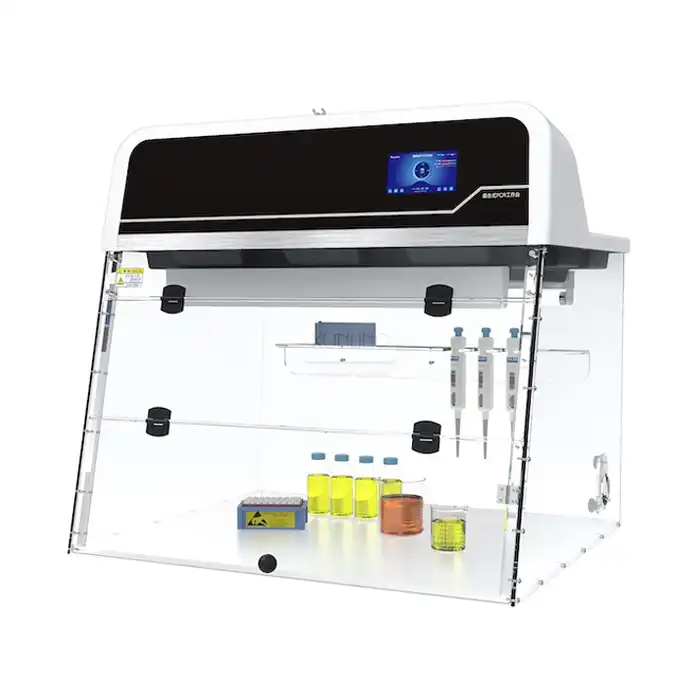
_1756090899038.jpg)
